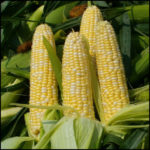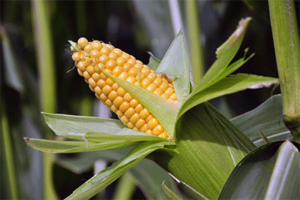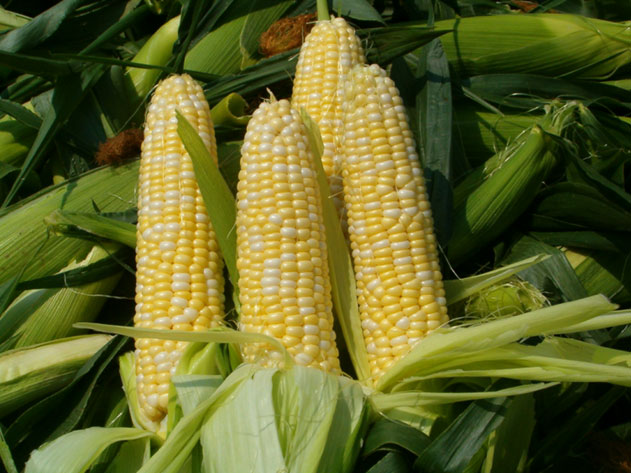Chromatography Quiz #16 Results:
We would like to congratulate our grand prize winners of our last newsletter’s Blast from the Past Picture Quiz: Richard Dickerson from Eurofins Nutritional Analysis Center,  Narjes Ghafoori from LA County Environmental Toxicology Laboratory, Tom Schneider from Suffolk County Water Authority, Dr. Pravish Tiwari from Cipla, Matthew Hartz from Eurofins Eaton Analytical, and Dr. Paul Levy from the Children’s Hospital at Montefiore!
Narjes Ghafoori from LA County Environmental Toxicology Laboratory, Tom Schneider from Suffolk County Water Authority, Dr. Pravish Tiwari from Cipla, Matthew Hartz from Eurofins Eaton Analytical, and Dr. Paul Levy from the Children’s Hospital at Montefiore!
They have each won and will shortly be receiving: a Della Terra Gourmet Gift Set!! The 25-year-aged balsamic vinegar and signature extra virgin olive oil are presented elegantly in this delightful collection by the Della Terra family, and delivered courtesy of gifttree.com.
We would like to thank all of you for your submissions!
The correct answer for the flashback picture:
Despite Michael’s adamant protests, the photographer insisted on prominently displaying the Trione bottles during the photo shoot for the fluorometer detector. Seeing as how Trione is not a fluorescent reagent, this choice was almost as embarrassing as the quote “Gilson’s 121 is the best fluorometer I’ve used” boldly stated in the original advertisement. The year this Gilson ad was published, Michael was approached (good-naturedly) by every other fluorometer manufacturer at Pittcon.
Thank you!
Pickering Labs
Chromatography Quiz #17:
Oct 1, 2014, Editor’s Note: We discovered a typo. Originally, we listed the Reactor 1 temperature at 100°C. It should be 36°C
Identify the error made when running the Glyphosate chromatogram below and win a prize! Simply email your answer as well as your full contact information to Rebecca at rlsmith@pickeringlabs.com by November 1st, 2014 in order to win. You will receive email confirmation that your submission has been received. The troubleshooting answer and winner congratulations will be published in the next issue (to be anonymous, please notify Rebecca in submission).
Glyphosate Analysis for US EPA Method 547
Pickering Standard: 1700-0080 Glyphosate Test Mixture, 2.5 µg/mL, 10 µL injection
Pickering Column: 1954150 Cation-exchange Column for Glyphosate, 4x150mm
Normal Operating Conditions: (for reference only, condition changes may be reflected in chromatogram)
Column Temperature: 55°C
Flow rate: 0.4 mL/min
Eluant Gradient:

Post-column conditions:
Reagent 1: Oxidizing reagent – 100 uL of 5% Sodium Hypochlorite in 950 mL of GA116
Reagent 2: 100 mg of OPA, 2 g Thiofluor™ in 950 mL of GA104
Reactor 1: 36 °C, 0.5 mL
Reactor 2: ambient. 0.1 mL
Reagent flow rates: 0.3 mL/min
Detection: Fluorometer ex 330 nm, em 465 nm
Troubleshooting Chromatogram:
Reference Chromatogram:


 Events surrounding Glyphosate testing in foods continue to evolve with the latest stories “France banning Glyphosate sales in consumer nurseries” and “California requiring labeling Glyphosate as a carcinogen.” We also want to discuss the EU- wide petition to ban Glyphosate.
Events surrounding Glyphosate testing in foods continue to evolve with the latest stories “France banning Glyphosate sales in consumer nurseries” and “California requiring labeling Glyphosate as a carcinogen.” We also want to discuss the EU- wide petition to ban Glyphosate.
 The AOAC International Conference caters to chemists and analytical professionals from around the world. This year the meeting is in Dallas, Texas from September 16-24, 2016. Pickering Laboratories will be showing our latest applications and products at our AOAC exhibition booth #308. We are also a corporate sponsor and a contributor to several committee meetings throughout the year. Our commitment to AOAC is reflected in the nay products and methods we offer that follow AOAC methods and guidelines.
The AOAC International Conference caters to chemists and analytical professionals from around the world. This year the meeting is in Dallas, Texas from September 16-24, 2016. Pickering Laboratories will be showing our latest applications and products at our AOAC exhibition booth #308. We are also a corporate sponsor and a contributor to several committee meetings throughout the year. Our commitment to AOAC is reflected in the nay products and methods we offer that follow AOAC methods and guidelines.
 As the scrutiny of Glyphosate grows in the United States, a U.S. Government Accountability Office report has criticized the Food and Drug Administration (FDA) for not sufficiently monitoring residues of the chemical on foods. This February, the FDA announced testing of Glyphosate in foods including soybeans, corn, milk, and eggs. Meanwhile, consumer groups, academics and testing laboratories have claimed to have detected Glyphosate in breast milk, honey, cereal, wheat flour, soy sauce, and infant formula as well.
As the scrutiny of Glyphosate grows in the United States, a U.S. Government Accountability Office report has criticized the Food and Drug Administration (FDA) for not sufficiently monitoring residues of the chemical on foods. This February, the FDA announced testing of Glyphosate in foods including soybeans, corn, milk, and eggs. Meanwhile, consumer groups, academics and testing laboratories have claimed to have detected Glyphosate in breast milk, honey, cereal, wheat flour, soy sauce, and infant formula as well.









